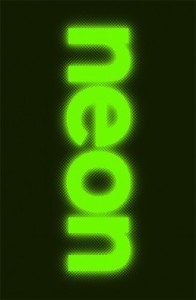

Tijdens de boekpresentatie worden video’s getoond die Henriëtte gemaakt heeft samen met Michael Wright onder de naam


Tijdens de boekpresentatie worden video’s getoond die Henriëtte gemaakt heeft samen met Michael Wright onder de naam
Henriëtte van ’t Hoog, recent works, 2006–2019
Published in 2019 with
80 pages, 59 ills.
Text: Alex de Vries
English translation: Kathryn M. Rudy
Graphic design: Phlox, Amsterdam
Print: Raddraaier, Amsterdam
Binding: Patist, Den Dolder
Photography: Henni van Beek, Anneke Bosma,
Lon Godin, Klaas van der Hoek
Available at REUTENGALERIE, Prinsengracht 510, Amsterdam, and in the Museumshop of the Stedelijk
Artists: Anneke Bosma (NL), Karina Bugayova (DE/UA), Christoph Dahlhausen (DE), Iemke van Dijk (NL), Daniel Geiger (DE), Henriëtte van ’t Hoog (NL), Oleksiy Koval (DE/UA), Guido Nieuwendijk (NL), Xiao Tang (CN), Marije Vermeulen (NL), Veronika Wenger (DE), Guido Winkler (NL), Michael Wright (UK).
Texts: Ine Dammers, Dmytro Goncharenko, Wies van Moorsel, Antoinette Reuten, Karin Wimmer, and others.
Graphic design: Folkert van der Hoek, together with Studio van Es.
Supported by the Department of Arts and Culture of the City of Munich and by Kastner AG.
 Catalogue
Catalogue
Neon – Vom Leuchten der Kunst. Edited by Amely Deiss, Andrea Jahn and Simone Schimpf. With texts by Amely Deiss,
From the catalogue:
‘Neonfarben erregen Aufmerksamkeit, rütteln wach, warnen und setzen leuchtende Akzente. Aus Werbung, Mode und Verkehr sind sie nicht mehr wegzudenken und seit den 1950er Jahren spielen sie auch in der Kunst eine wichtige Rolle. Die große Gruppenausstellung mit Werken von 38 Künstlern legt erstmals den Schwerpunkt auf die Verwendung von Neonfarben in der Kunst. Anhand der Präsentation ausgewählter Gemälde, Skulpturen, Installationen und Fotografien wird der Frage nachgegangen, warum Künstler die Signalfarbe als konstituierendes Element einsetzen.’
July 13 – August 18, 2013
Hours: Sat–Sun 1–6 pm, and by appointment
Opening: Saturday, July 13, 6–9 pm
Catalogue
Preview of the catalogue, designed by Nancy White
Participating artists:
Doppler is an international traveling exhibition organized by Mel Prest. The exhibition features works by twenty two artists living in the US and Europe. The exhibition title refers to the Doppler Effect as well as synesthesia. The intent of the exhibition is to visually question or crush the illusion of difference between 2D and 3D. The artists chosen have created work that optically straddles this un-locatable perceptual space where static objects move and shift or trigger simultaneous sense-readings.

Hubei Museum of Art
Hall No. 3/4/5/6
1 Sanguandian Donghu Road
Wuhan, Hubei
China
June 28 – August 4, 2013
Opening: June 28, 2013, 3:30 pm
Participating artists:
Curators: Li Jianchun (CN), Laura Sánchez Serrano (DE)
A Question of Rhythm and Method
Preface by Laura Sánchez Serrano in the catalogue
Taking the concepts of Rhythm and Method as a starting point, the exhibition highlights the similarities and differences between abstract art in Germany and China, building a bridge for cultural exchange and artistic dialogue. Rhythm and Method represent intriguing principles for understanding and appreciating abstract art: one focuses on composition and the other on procedure. Rhythm is a term normally used for music and literature, defined as a strong, regular, repeated pattern of movement or sound. In visual arts, rhythm is created through the repetition, alternation or gradation of pattern on a surface. Our eyes follow the surface, where patterns are arranged in a certain order, enabling us to experience the whole as a visual melody in time. Method describes the specific procedure used to accomplish a work of art. It refers to the specific technique used by the artists, the particular way they apply it and how their personal technique affects the result. There is no method without rhythm, nor rhythm without method. Method is the structure that allows rhythm, the engine that turns chaos into logical order.
The Hubei Museum of Art in Wuhan is showing works from the German “Rhythm Section” group for the first time, in dialogue with those of six renowned Chinese artists. It is an ideal scenario for creating intellectual exchange and stimulating debate about abstract art, immersing the visitor in a world of visual sensations connecting East and West.
December 1, 2012 – January 13, 2013
Opening: Saturday, December 1, 3–5 pm
Finissage: Sunday, January 13, 2–3 pm
Hours: Thu 2–6 pm, Fri–Sat 10 am – 6 pm, and by appointment; also open on December 9, and January 13, 1–5 pm
Participating artists:
Catalogue of Space, Expanding in PDF
From Gracia Khouw’s preface in the catalogue:
Scientific discoveries about the universe expand our perception and provide a framework for the imagination. Painting does this as well. If you stand in front of a painting, you dive into the time and space of the painting. The eye sees lines, surfaces, colour and paint in a certain order and puts the imagination to work, looking for meaning that relates primarily to our immediate surroundings, the habitable world. But what if the meaning refuses to be reduced to the reality as we experience it in everyday life?
In the exhibition Space, Expanding four artists are brought together who investigate ‘space’ in a manner akin to thinking about the universe. Unlike an architectural, habitable room you can build, which has dimensions through which you can walk, there is also space that denies any such foothold. Imagine a space that is continuously expanding and where there are no fixed dimensions or distances. What effect will that have on our perception of depth, motion and matter?
The artworks in Space, Expanding approach space differently from what we are accustomed to seeing. At first glance, they proceed from a recognizable starting point, such as perspective, grid lines, text, images or reflections of reality, but on closer inspection each image contains within itself multiple representations or propositions of reality.